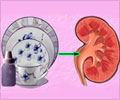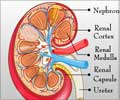The world's first miniaturized kidney dialysis machine has been used successfully on eight babies in nine months, built with money raised by Italian scientists, who announced Friday.

"Incredible but true," said Claudio Ronco from the San Bortolo Hospital's renal research institute in Vicenza. "It's like using a tool for a car to fix a watch."
Yet companies have been loath to invest in baby-targeted machines as they are not profitable enough, he added.
"The number of neonates (infants) around the world that suffer from this disorder is very small and therefore there is no point for a company to invest in technology."
So Ronco and colleagues launched a fundraising programme, hosting sports games and concerts and collecting some 300,000 euros ($410,000) to build a prototype.
This attracted help from two Italian manufacturers, and so the child-friendly machine dubbed CARPEDIEM (Cardio-Renal Paediatric Dialysis Emergency Machine) was born.
Advertisement
"The baby was almost dead," Ronco told AFP. "This baby could not be treated with any other treatment. When the baby was discharged from hospital we really had the impression that we had done something very good."
Advertisement
Nine other babies have since been treated in Europe, of whom seven survived, said Ronco. This was an "incredible" percentage given the historical mortality rate of up to 90 percent, he explained.
"This technology has the potential to revolutionise the treatment of infants with acute kidney injury," said a press statement from The Lancet medical journal, which published the study.
It can be used on newborns and children up to 10 kilogrammes, can handle smaller volumes of fluid much more accurately, and allows the use of a much smaller catheter.
About 18 percent of infants with low birthweight and about 20 percent of children admitted to intensive care are estimated to suffer from acute kidney injury, according to the statement.
In a comment on the study, Benjamin Laskin of The Children's Hospital of Philadelphia and Bethany Foster from Montreal's Children's Hospital said the girl's survival was "an outcome that would have been less likely just several years ago".
"The smile of the baby when she came to visit me three days ago -- that smile was worth 40 years of medicine," added Ronco.
Source-AFP










